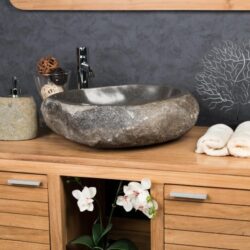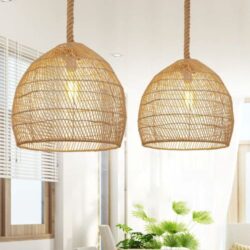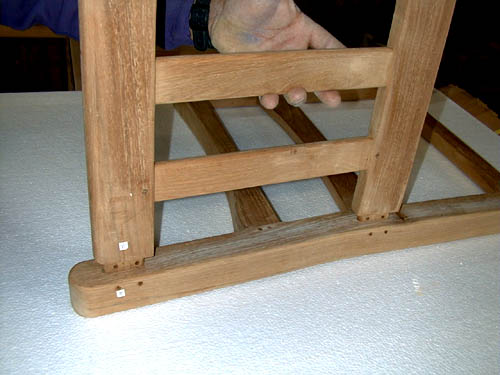Teak Grade
Teak furniture is made from teak wood, and is manufactured by several methods. It is important to understand the grades of wood, the process for the wood, and the manufacturing process.
Teak Wood is graded by appearance, knots (and their location) and by the kind of wood. There are three main grades in teak wood.
Grade A Teak wood is produced from the center of the tree (commonly known as the ‘heart’ wood). A grade A piece of teak will be produced from a tree from 30-50 years of age. characteristics: close grain, warm/honey color, oil rich and knot free. No streaks of white, no knots on top side, very few (live knots only – where there is discoloration but no fill – on the underside) knots, and these knots have to be less than 0.5 inch in diameter, and present only once in every 3-4 linear feet. This kind of wood is used in machine made teak furniture, since it is risky for the manufacturer to allow a cottage industry person to play with expensive, high quality wood and expect mediocre to bad results.
Grade B Teak wood has a warm color with occasional streaks of black and some splotches and discoloration. Grade B teak wood has more allowance for knots per linear feet. Grade B teak wood is sometimes used in “semi machine made” product. Semi Machine Made implies that personnel use electric saws to cut the wood, but there is no concept of a jig and fixture to make all the slats the same size or make the process repeatable. Semi Machine made product does not allow the end consumer the luxury of finding a replacement part, since all parts are unique and made to fit a specific piece. Semi machine made also means that the tenons “float” in the mortices (the joint is not exact, and there are gaps). This is usually filled with epoxy, and generally the furniture comes completely assembled, because the end customer would not tolerate the sloppiness.
Grade C Teak Wood has a dark color in places, mixed with a very white color in places. The white is the young sapwood. There is an allowance for dead knots (where the knot was weak, has been gouged out and filled with epoxy or putty) These knots may be on the top side or the bottom side. Grade C teak wood is most often used in “hand crafted” outdoor teak furniture. This is completely outsourced to the village industry and follows no process for drying and manufacture. Hand crafted also means that the tenons “float” in the mortices (the joint is not exact, and there are gaps). This is usually filled with epoxy, and generally the furniture comes completely assembled.
In summary – Grade A teak wood will most likely be machine made. Grade B and C will most likely be “semi machine made” or “hand crafte”.
Manufacturing
Machine made makes the parts precise and interoperable. This implies that if a part on your chair or table breaks, you can get a like replacement.
Semi Machine made furniture is a cheaper method of manufacture, more prone to error, and every piece is unique, with little possibility of replacing parts exactly
“Hand Made“ – means everything in that piece of furniture was made without jigs and fixtures, and that there is a wide variation between items, plus the incidence and danger of warping (mainly in the legs).
So, in conclusion – Grade A teak combined with Machine made production and kiln drying (not air drying) offers the best furniture.
Indoor or Outdoor Teak Furniture Assembly
.Assembling your teak furniture is easy! ART CLASSIC INTERNATIONAL PT supplies fully machine made product where you can actually see the precision joinery. Outdoor Teak Furniture that comes preassembled is generally hand made in cottage industries overseas – which implies that the joinery is not accurate, the wood is not dried properly. The probability that a fully assembled hand made garden furniture item will shrink, crack or loosen up is high. Further,
ART CLASSIC INTERNATIONAL PT can supply spare parts (including sections of benches chairs and tables) that fit because of our precision machine made manufacturing process.
The indoor or outdoor teak furniture you have ordered may be shipped “partially (flat pack) assembled”. Some assembly is required. Assembly instructions are included in every package. Glue is not necessary. Should you choose to use glue we recommend usage of an Outdoor Wood Glue (like Titebond) in the joints. Note: Use glue sparingly, if you use glue at all, on your indoor or outdoor teak furniture and wipe excess with a damp cloth.
Please call us at +62 (612) 25.714.555 if you have any questions.
SEE ASSEMBLY VIDEOS BY CLICKING HERE.
HELPFUL HINTS FOR ASSEMBLING, READYING, AND CLEANING YOUR TEAK PATIO FURNITURE
DOWELS – If your teak furniture requires you to put in dowels, it really helps to bevel the end of the dowels with a pencil sharpener (just a little bit). The dowels will go in easier.
DOWELS – When tapping in the dowels please note that the dowel will go in very easily at first as it is going through the first layer of wood, then you will feel resistance as it is going through both the first layer and the second layer, and finally you will feel it spring (with no give) when it has reached the end. Please do not hammer the dowels in beyond when you feel the dowel has reached the end, else they will mushroom, or in rare cases go through the wood on the back side.
CUSHIONS – Before placing Cushions on Teak Furniture that you have just assembled clean the teak with a damp cloth at least twice to get rid of fine sawdust or oils that may be on the surface. Wait for it to dry. If a cushion does get a little stain from the teak wood sawdust or oil – dont worry. You can remove this light brown mark by rubbing a mixture of Dawn dishwashing liquid and Oxyclean lightly on the area and hosing it off.
NOT ALL ITEMS REQUIRE ASSEMBLY
Folding Teak Furniture pieces – like folding chairs (Rockport Chairs, Classic Chairs, Recliner Chairs, Providence Chairs, Newport Chairs), folding tables (small occasional folding tables, Octagon Collapsible Table, Round Collapsible Table 48″) and Steamer Chairs – DO NOT REQUIRE ASSEMBLY. They will arrive folded in their cartons.
Other Teak Outdoor Furniture pieces like Dining Tables, Occasional Tables, Coffee Tables require minor assembly. The table top comes completely assembled (even with hidden extension leaves). The legs need to be put on, and on the larger tables, a brace between the legs. Normally, you would spend about 10 mins per table on the smaller tables, and about 20 minutes on the larger tables.
Non Folding Teak Chairs or Benches (Block Island, Boston, Aquinah, Chippendale) are usually shipped in 4 -5 pieces based on the design. There are two sides with the arms (or without), the back, the drop in seat, and usually a brace either in the back or front. These need to be assembled as shown below. Normally, you would spend about 10 – 15 mins per chair.
Indoor or Outdoor Teak Furniture – Test Assembly
Please test assemble your teak furniture product before using glue and starting the final assembly process. You may use ordinary nails in the dowel holes to hold the product together (do not bang in the nails, just insert them into the dowel holes). The step of test assembly will allow you to make sure of the following:
a) You know how the parts fit together,
b) You can see the product in its assembled form before permanent assembly
c) You can check whether the teak product fits your preferences.
Once the product is assembled, it is difficult to package and transport. Once permanently assembled, shipping charges and packing are your responsibility.ART CLASSIC INTERNATIONAL PT is not responsible for errors during assembly.
General Steps for Assembly of your Indoor or Outdoor Teak Furniture
1) Inspect package and Drawings to recognize all components. Note little numbers on ends or faces of components.
2) Lay out the parts so that the numbered pieces match.
3) Tenons (oval, round or flat extending things) will go into the Mortises (oval or round holes) as shown to the right and below.
4)In general, Start assembly by laying one side on the ground and building upwards. (Click the photo to enlarge.)
5) Once all the pieces are in place, insert a small screwdriver or pin into all the dowel holes to ensure they are aligned.
6) Lightly Tap dowels in with a hammer or mallet. You will feel them seat. Dowel will not go in all the way. There may be about 1/4 inch of dowel left over. You may cut off the excess with a chisel or a kitchen knife. Do not smash the dowel any further after it seats.
7) Congratulations! Enjoy your new Indoor or Outdoor Teak Furniture!





